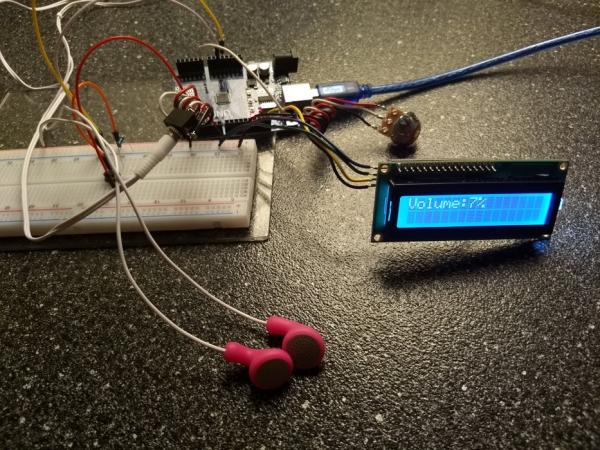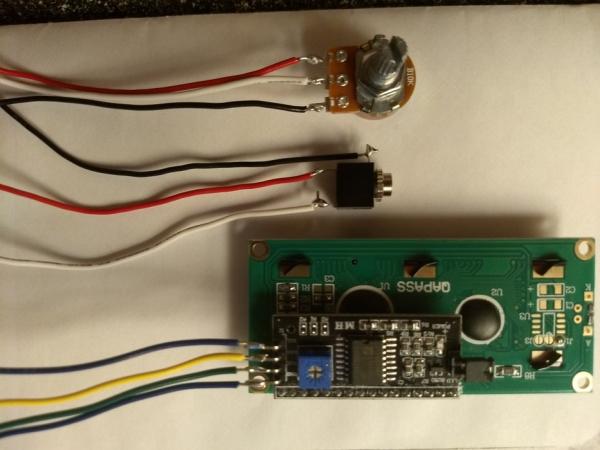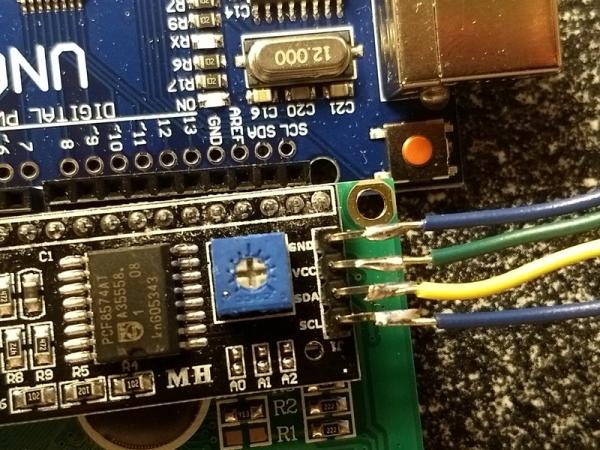
ArduinoUNO with volume control, pause/play button, and LCD display:
This tutorial will show you how to set up an arduinoUNO to produce a tone through standard earphones, with volume control via potentiometer, with visual volume display via LCD, with pause/play button.
Step 1: Pieces, Parts

The image shows the components used in this demonstration.
-solderless breadboard (attached to acryllic base in photo)
-standard earphones
-analog potentiometer
-3.5mm jack
-16×2 LCD with I2c “backpack” chip
-button
-10 ohm resistor(shown above the button)
-arduinoUNO with USB connector
-solderless wires
Step 2: A Note About Soldering:

While designing this example, the solderless connections on these components were unreliable.
This demonstration does not include soldering, but it should be noted that connections have been soldered to this hardware.
-potentiometer
-3.5mm jack
-LCD
Also noteable in this image, the black I2c “backpack” chip is visible on the back of the LCD. Normally the LCD interfaces with 16 connections. One function of the I2c is to reduce this number to 4. This is where the soldered connections are made.
Step 3: Power and Ground:

Begin by attaching power and ground connections to the solderless breadboard with the solderless connector wires.
This makes supplying power to and grounding the rest of the circuit much more manageable since there are very limited pins on the arduino.
Step 4: Pause/Play Button:

In the image, the button straddles the two halves of the breadboard. This is just to leave plenty of space.
The 10ohm resistor is connected to the ground rail and one side of the button.
Another solderless connector wire connects the other side of the button to the power rail.
Step 5: Connect the LCD:

The Ic2 chip and the arduino are both labeled to help identify where connections belong.
SDA and SCL (blue and yellow) connect to the ardunio in the pins labeled the same.
GND and VCC are ground and 5v respectively. Connect them to the ground and power rails on the breadboard.
Source: Arduino Volume Control
